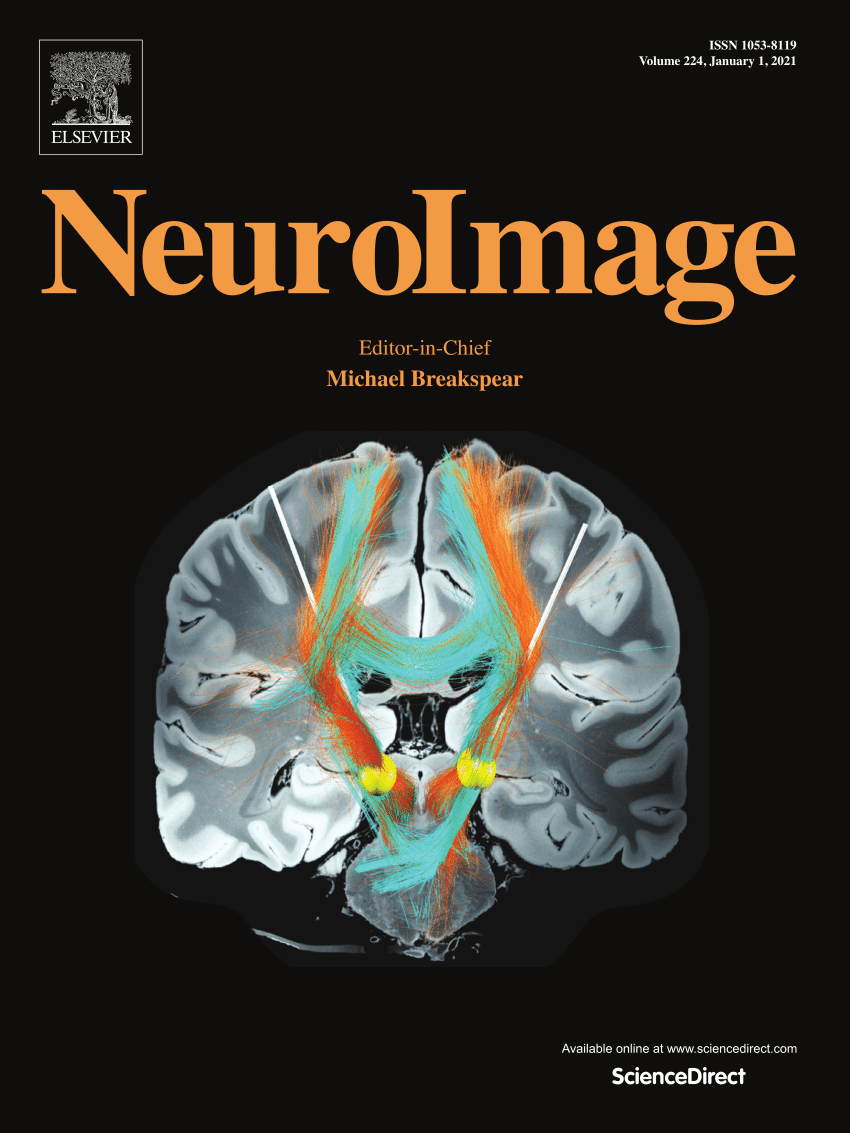衰老过程中的神经连通性和平衡控制:来自感官冲突中的定向皮质网络的见解
IF 4.7
2区 医学
Q1 NEUROIMAGING
引用次数: 0
摘要
平衡控制对日常活动的稳定性至关重要,它依赖于视觉、前庭和体感系统的感觉输入的整合。老龄化降低了这些系统的效率,导致跌倒的风险增加;然而,这种衰退背后的神经机制,特别是在感觉冲突下,还没有完全理解。本研究探讨了平衡任务中衰老对神经连通性和感觉统合的影响。96名参与者(47名老年人和49名年轻人)使用虚拟现实耳机和旋转平台在感觉一致和感觉冲突条件下接受平衡扰动任务。行为测量,包括姿势摇摆和知觉准确性,被记录下来。采用广义部分定向相干性(GPDC)分析脑电数据,评估定向功能连通性和网络效率。与年轻人相比,老年人表现出更大的姿势摇摆、更低的感知准确性和更弱的感知冲突的能力,尤其是在冲突条件下。连接性分析表明,年轻人在感觉冲突中表现出从视觉到体感区域的适应性转移。相比之下,老年人表现出一种适应性较差的连接模式。同时,年轻人的整体效率和聚类系数更高,表明大脑网络更有效和模块化。对老年人的相关分析显示,在感觉冲突时,较高的视觉皮质效率与较低的姿势摇摆有关,而较高的运动皮质效率仅在感觉一致的情况下与较大的摇摆有关。简而言之,神经适应性在感觉整合和平衡控制中至关重要。由于老年人的神经灵活性和网络效率下降,他们的感觉重加权被破坏,不稳定性在感觉冲突中增加。这些发现为制定有针对性的干预措施奠定了基础,以加强老年人的平衡能力,降低老年人跌倒的风险。本文章由计算机程序翻译,如有差异,请以英文原文为准。
Neural connectivity and balance control in aging: Insights from directed cortical networks during sensory conflict
Balance control is crucial for stability during daily activities, relying on the integration of sensory inputs from the visual, vestibular, and somatosensory systems. Aging impairs the efficiency of these systems, leading to an increased risk of falls; however, the neural mechanisms underlying this decline, particularly under sensory conflict, are not fully understood. This study investigated the effects of aging on neural connectivity and sensory integration during balance tasks. Ninety-six participants (47 older adults and 49 young adults) were subjected to balance perturbation tasks under sensory-congruent and sensory-conflict conditions using a virtual reality headset and rotating platform. Behavioral measures, including postural sway and perceptual accuracy, were recorded. Electroencephalography (EEG) data were analyzed using generalized partial directed coherence (GPDC) to assess the directed functional connectivity and network efficiency. Older adults exhibited significantly greater postural sway, reduced perceptual accuracy, and a diminished ability to detect sensory conflicts than young adults, particularly under conflict conditions. As demonstrated by connectivity analysis, young adults showed adaptive shifts in connectivity from the visual to somatosensory regions during sensory conflict. In contrast, older adults demonstrated a less adaptable mode of connectivity. At the same time, global efficiency and clustering coefficients of young adults were higher, suggesting more effective and modular brain networks. Correlation analyses in older adults revealed that higher visual cortex efficiency was linked to lower postural sway specifically during sensory conflict, whereas higher motor cortex efficiency was associated with greater sway only under sensory-congruent conditions. In short, neural adaptability is vital in sensory integration and balance control. Due to decreased neural flexibility and network efficiency in older adults, their sensory reweighting was undermined and instability increased during the sensory conflict. These findings establish a foundation for development of targeted interventions to strengthen balance and lower the risks of falls in older adults.
求助全文
通过发布文献求助,成功后即可免费获取论文全文。
去求助
来源期刊

NeuroImage
医学-核医学
CiteScore
11.30
自引率
10.50%
发文量
809
审稿时长
63 days
期刊介绍:
NeuroImage, a Journal of Brain Function provides a vehicle for communicating important advances in acquiring, analyzing, and modelling neuroimaging data and in applying these techniques to the study of structure-function and brain-behavior relationships. Though the emphasis is on the macroscopic level of human brain organization, meso-and microscopic neuroimaging across all species will be considered if informative for understanding the aforementioned relationships.
 求助内容:
求助内容: 应助结果提醒方式:
应助结果提醒方式:


